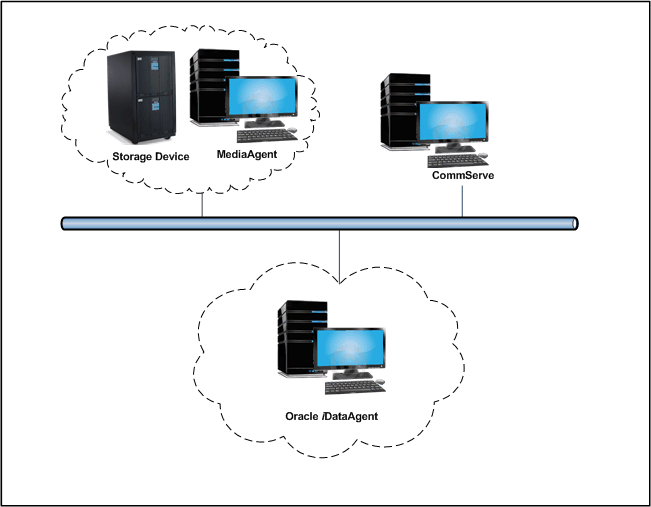 The
Oracle iDataAgent provides the flexibility to backup the
Oracle database in different environments. This is very essential since the
Oracle database is
always subject to constant changes.
The
Oracle iDataAgent provides the flexibility to backup the
Oracle database in different environments. This is very essential since the
Oracle database is
always subject to constant changes.
Table of Contents |
Where to go Next |
|
Walks you through the process of installing the Oracle iDataAgent. |
The Oracle iDataAgent provides an unique, simplified end-to-end backup and recovery solution for Oracle data in your enterprise. In addition to complete protection of the entire Oracle database, it provides more granular backup and recovery of specific data files and logs. The product can be used to perform both full system rebuilds and granular recovery of the data.
 The
Oracle iDataAgent provides the flexibility to backup the
Oracle database in different environments. This is very essential since the
Oracle database is
always subject to constant changes.
The
Oracle iDataAgent provides the flexibility to backup the
Oracle database in different environments. This is very essential since the
Oracle database is
always subject to constant changes.
You can perform a full or incremental backup of the entire database or individual datafiles/ tablespaces, or archive logs at any point of time. The following section describes the backups that can be performed in different environments.
When the database is shutdown and not available for use, you can perform a full backup of the database without the logs. This is especially used when the data is consistent and there are no transactions in the database.
In cases, when you cannot bring down the database to perform an offline backup, you can use the online backup method. Here, you can perform full or incremental backups when the database is online and in ARCHIVELOG mode. This is very useful when you want to perform a point-in-time restore of the database.
You also have the facility the backup only the archive logs when the database is online. These logs can be applied to an online backup to recover the database to the current point-in-time.
You can also protect the non-database files and profiles using the appropriate File System iDataAgent.
This iDataAgent allows you to backup and store copies of valid data from a source copy of a specific storage policy to all or one active secondary copy within a storage policy providing for a better tape rotation. An online full backup job is copied to a selective copy, if the full backup job cycle completes successfully thereby allowing you to select, store and protect your valuable data on a secondary copy for future restores in a more viable and economic mode.
In the event that a MediaAgent used for the backup or recovery operation fails, it is automatically resumed on alternate MediaAgents. In such cases, the backup or restore job will not restart from the beginning, but will resume from the point of failure. This is especially useful for backups and restores of large amount of file system data.
In the event, that a network goes down, the backup and recovery jobs are resumed on alternate data paths. Similarly, in the event of a device failure, the jobs are automatically switched to alternate disk and tape drives.
You can view and verify the status of backup and recovery operations from the Job Controller and Event Viewer windows within the CommCell Console. You can also track the status of the jobs using Reports, which can be saved and easily distributed. Reports can be generated for different aspects of data management. You also have the flexibility to customize the reports to display only the required data and save them to any specified location in different formats. For example, you can create a backup job summary report to view at-a-glance the completed backup jobs.
In addition, you can also schedule these reports to be generated and send them on email without user intervention.
Deduplication provides a smarter way of storing data by identifying and eliminating the duplicate items in a data protection operation.
Deduplication at the data block level compares blocks of data against each other. If an object (file, database, etc.) contains blocks of data that are identical to each other, then block level deduplication eliminates storing the redundant data and reduces the size of the object in storage. This way dramatically reduces the backup data copies on both the disk and tapes.
The Oracle iDataAgent documentation uses the following terminology:
Client |
The computer in which the iDataAgent is installed and contains the data to be secured. |
Instance |
The Oracle database to be used for the backup and restore operations. |
Subclient |
The Oracle data to be backed up. |